fuse TOYOTA HIGHLANDER 2008 XU40 / 2.G Owners Manual
[x] Cancel search | Manufacturer: TOYOTA, Model Year: 2008, Model line: HIGHLANDER, Model: TOYOTA HIGHLANDER 2008 XU40 / 2.GPages: 577, PDF Size: 11.46 MB
Page 5 of 577
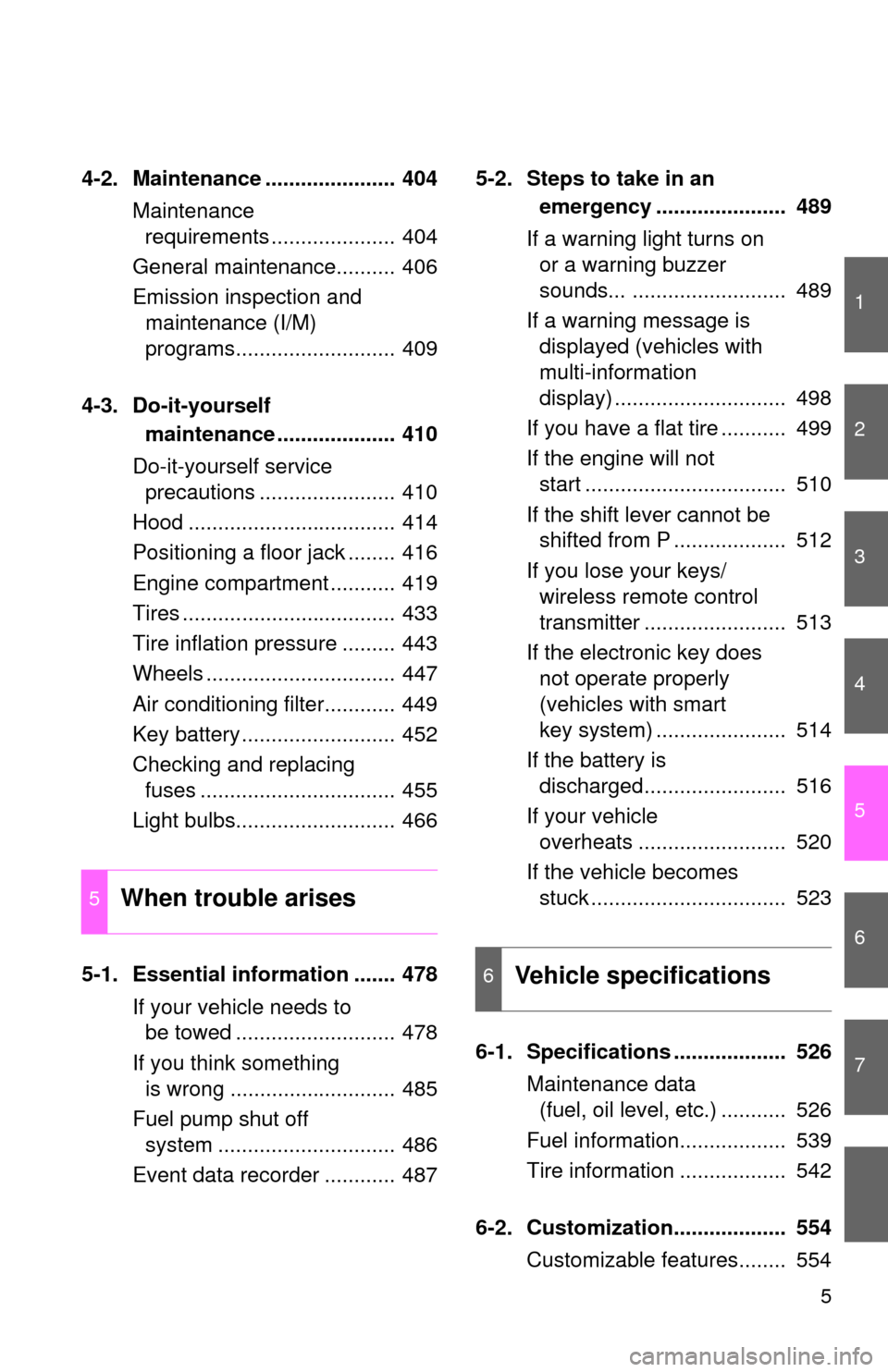
1
2
3
4
5
6
7
5
4-2. Maintenance ...................... 404Maintenance requirements ..................... 404
General maintenance.......... 406
Emission inspection and maintenance (I/M)
programs........................... 409
4-3. Do-it-yourself maintenance .................... 410
Do-it-yourself service precautions ....................... 410
Hood ................................... 414
Positioning a floor jack ........ 416
Engine compartment ........... 419
Tires .................................... 433
Tire inflation pressure ......... 443
Wheels ................................ 447
Air conditioning filter............ 449
Key battery .......................... 452
Checking and replacing fuses ................................. 455
Light bulbs........................... 466
5-1. Essential information ....... 478 If your vehicle needs to be towed ........................... 478
If you think something is wrong ............................ 485
Fuel pump shut off system .............................. 486
Event data recorder ............ 487 5-2. Steps to take in an
emergency ...................... 489
If a warning light turns on or a warning buzzer
sounds... .......................... 489
If a warning message is displayed (vehicles with
multi-information
display) ............................. 498
If you have a flat tire ........... 499
If the engine will not start .................................. 510
If the shift lever cannot be shifted from P ................... 512
If you lose your keys/ wireless remote control
transmitter ........................ 513
If the electronic key does not operate properly
(vehicles with smart
key system) ...................... 514
If the battery is discharged........................ 516
If your vehicle overheats ......................... 520
If the vehicle becomes stuck ................................. 523
6-1. Specifications ................... 526 Maintenance data (fuel, oil level, etc.) ........... 526
Fuel information.................. 539
Tire information .................. 542
6-2. Customization................... 554 Customizable features........ 554
5When trouble arises
6Vehicle specifications
Page 330 of 577
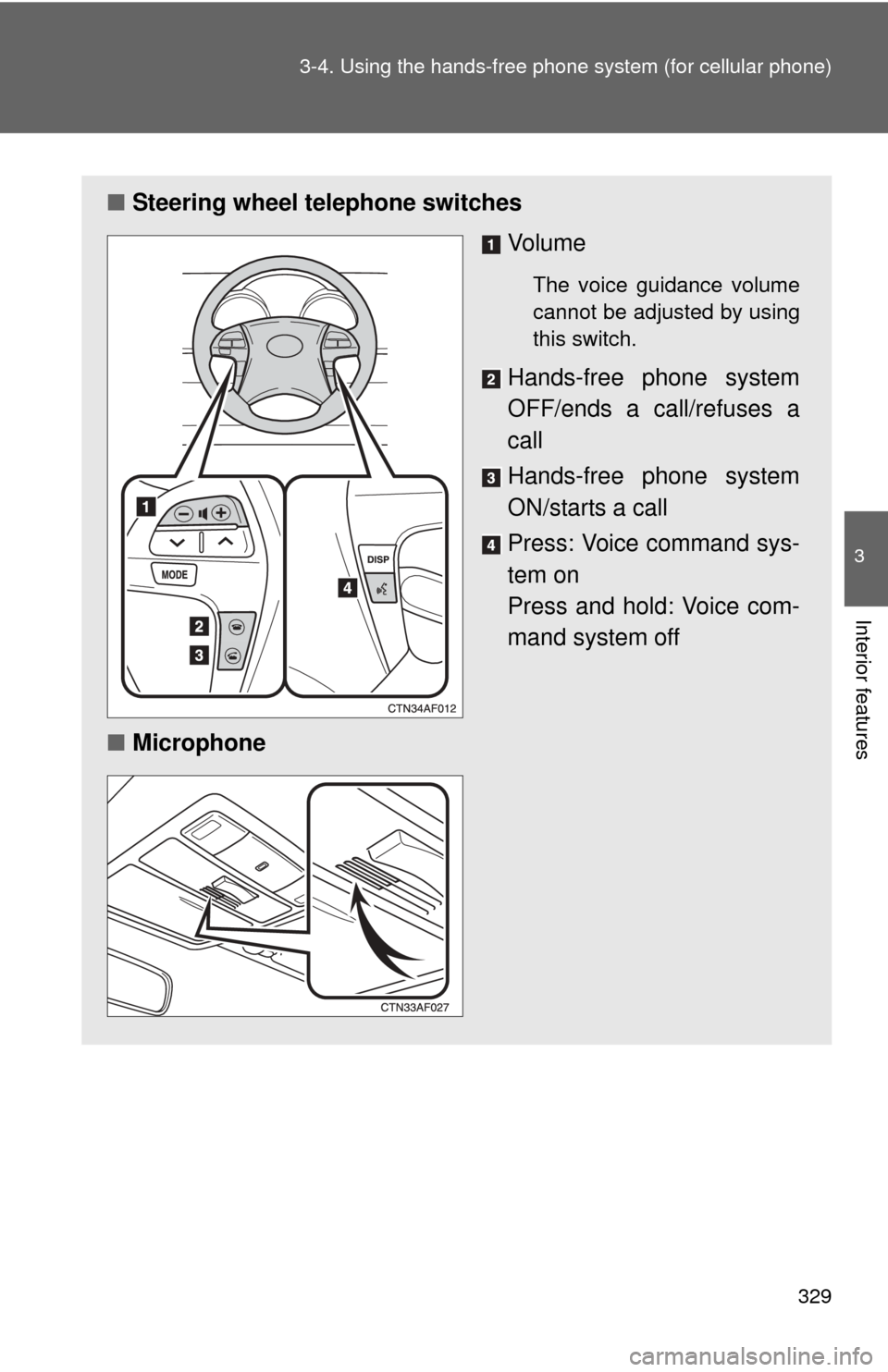
329
3-4. Using the hand
s-free phone system (for cellular phone)
3
Interior features
■Steering wheel telephone switches
Vo l u m e
The voice guidance volume
cannot be adjusted by using
this switch.
Hands-free phone system
OFF/ends a call/refuses a
call
Hands-free phone system
ON/starts a call
Press: Voice command sys-
tem on
Press and hold: Voice com-
mand system off
■ Microphone
Page 378 of 577

377
3-7. Other interior features
3
Interior features
■
The power outlet can be used when
12V
The “ENGINE START STOP” switch or the engine switch is in ACC or
ON.
115 VAC
The “ENGINE START STOP” switch or the engine switch is in the ON.
NOTICE
■To avoid damaging the power outlet
Close the power outlet lid when the power outlet is not in use.
Foreign objects or liquids that enter the power outlet may cause a short cir-
cuit.
■ To prevent the fuse from being blown
12V
Do not use an accessory that uses more than 12 V 10 A.
115 VAC
Do not use a 115 VAC appliance that requires more than 100 W.
If a 115 VAC appliance that consumes more than 100 W is used, the pro-
tection circuit will cut the power supply.
■ To prevent the battery from being discharged
Do not use the power outlet longer than necessary when the engine is off.
■ Appliances that may not operate properly (115 VAC)
The following 115 VAC appliances may not operate properly even if their
power consumption is under 100 W.
●Appliances with high initial peak wattage
● Measuring devices that process precise data
● Other appliances that require an extremely stable power supply
Page 398 of 577
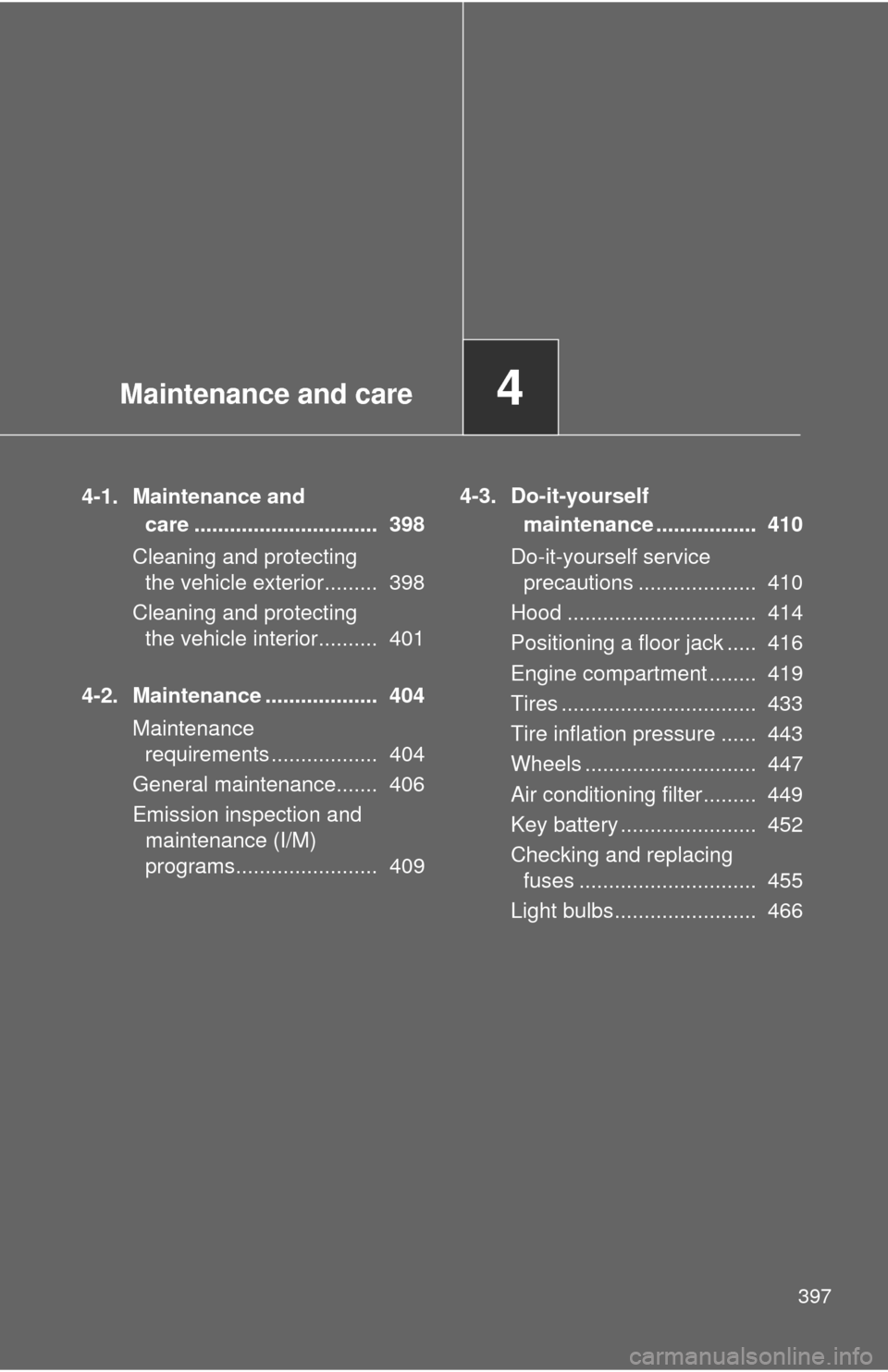
Maintenance and care4
397
4-1. Maintenance and care ............................... 398
Cleaning and protecting the vehicle exterior......... 398
Cleaning and protecting the vehicle interior.......... 401
4-2. Maintenance ................... 404 Maintenance requirements .................. 404
General maintenance....... 406
Emission inspection and maintenance (I/M)
programs........................ 409 4-3. Do-it-yourself
maintenance ................. 410
Do-it-yourself service precautions .................... 410
Hood ................................ 414
Positioning a floor jack ..... 416
Engine compartment ........ 419
Tires ................................. 433
Tire inflation pressure ...... 443
Wheels ............................. 447
Air conditioning filter......... 449
Key battery ....................... 452
Checking and replacing fuses .............................. 455
Light bulbs........................ 466
Page 412 of 577
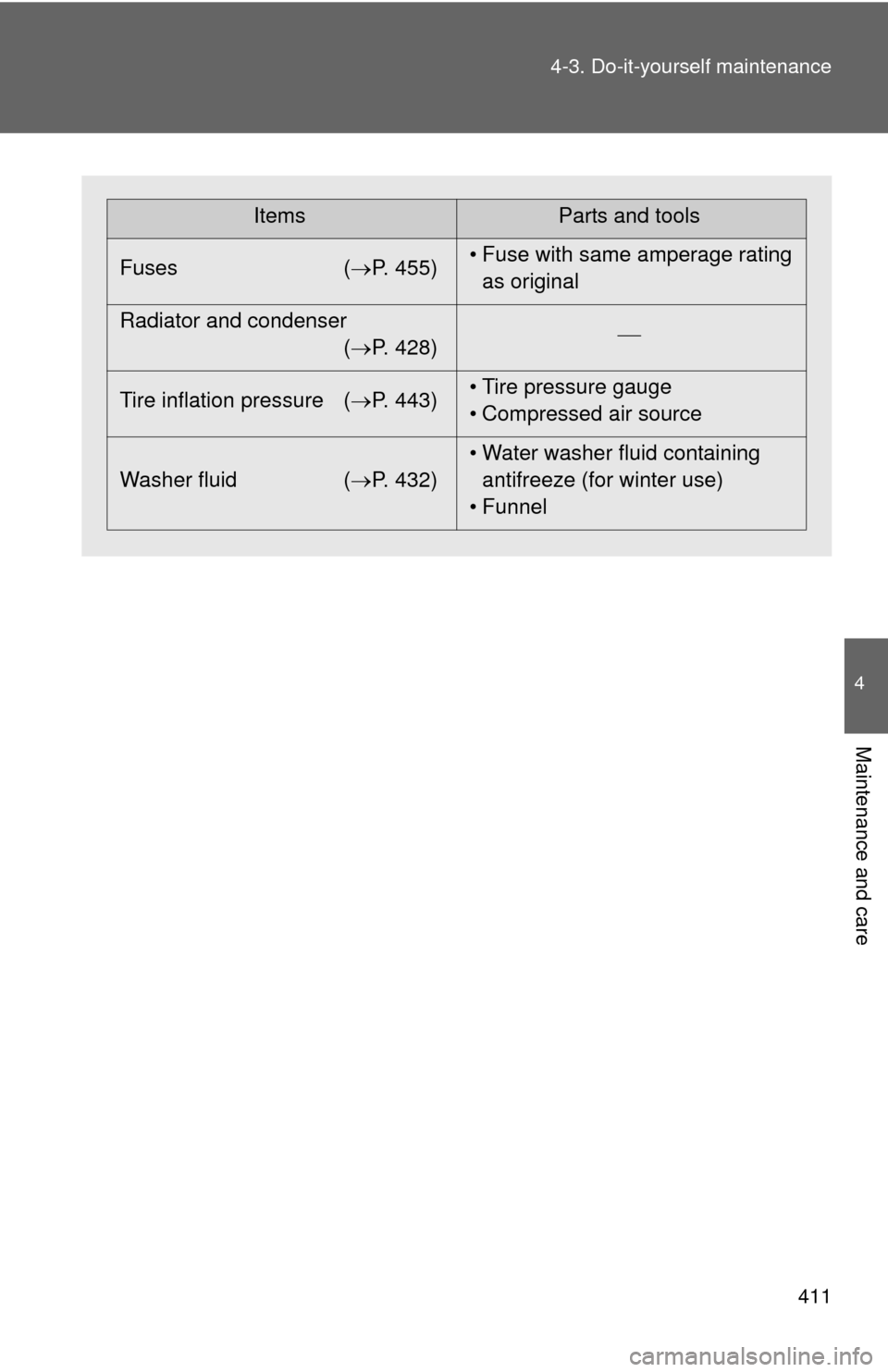
411
4-3. Do-it-yourself maintenance
4
Maintenance and care
ItemsParts and tools
Fuses ( P. 455)• Fuse with same amperage rating
as original
Radiator and condenser (P. 428)
Tire inflation pressure ( P. 443)• Tire pressure gauge
• Compressed air source
Washer fluid ( P. 432)• Water washer fluid containing
antifreeze (for winter use)
• Funnel
Page 420 of 577
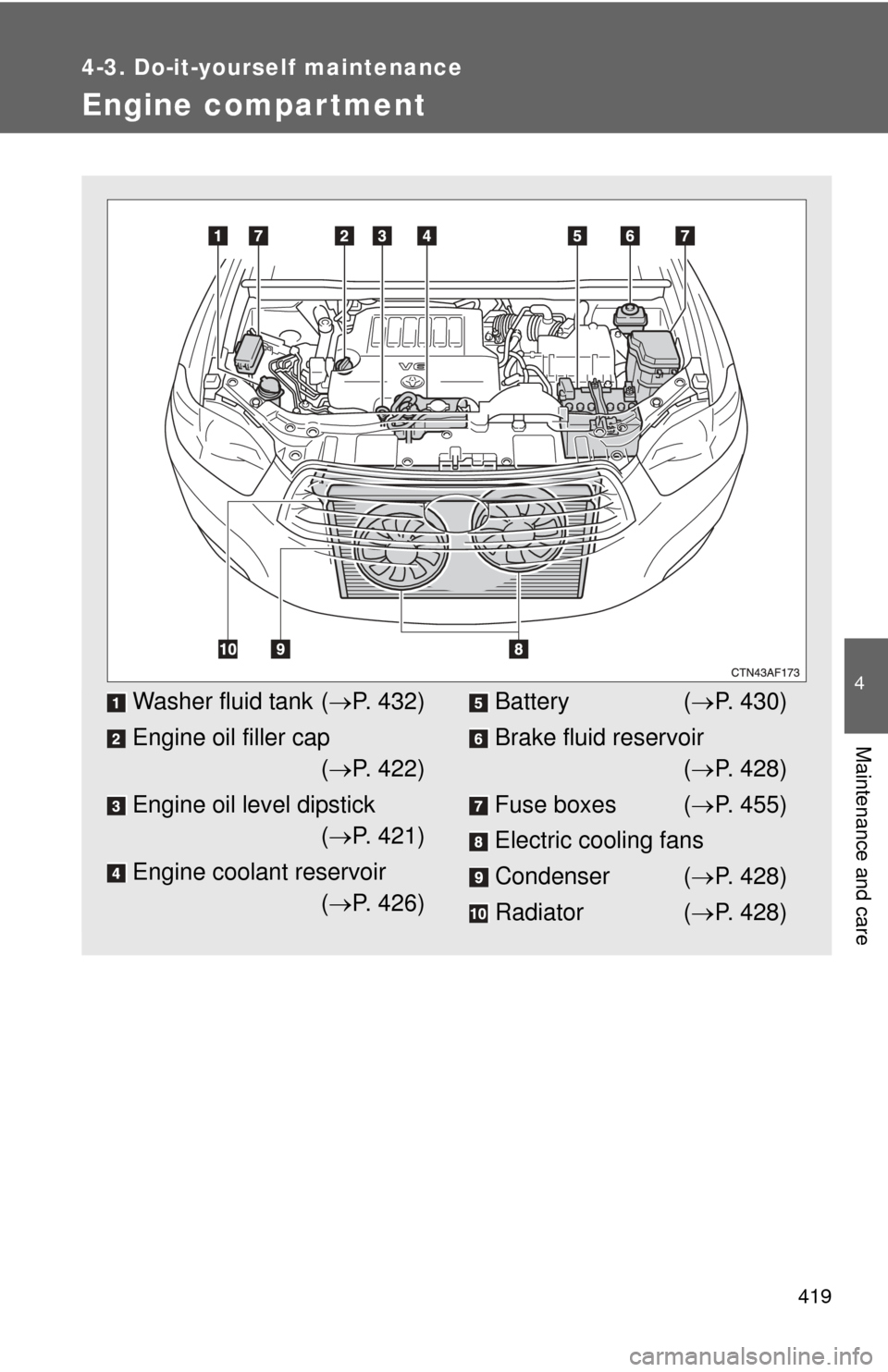
419
4-3. Do-it-yourself maintenance
4
Maintenance and care
Engine compar tment
Washer fluid tank (P. 432)
Engine oil filler cap ( P. 422)
Engine oil level dipstick ( P. 421)
Engine coolant reservoir ( P. 426)Battery ( P. 430)
Brake fluid reservoir ( P. 428)
Fuse boxes ( P. 455)
Electric cooling fans
Condenser ( P. 428)
Radiator ( P. 428)
Page 456 of 577
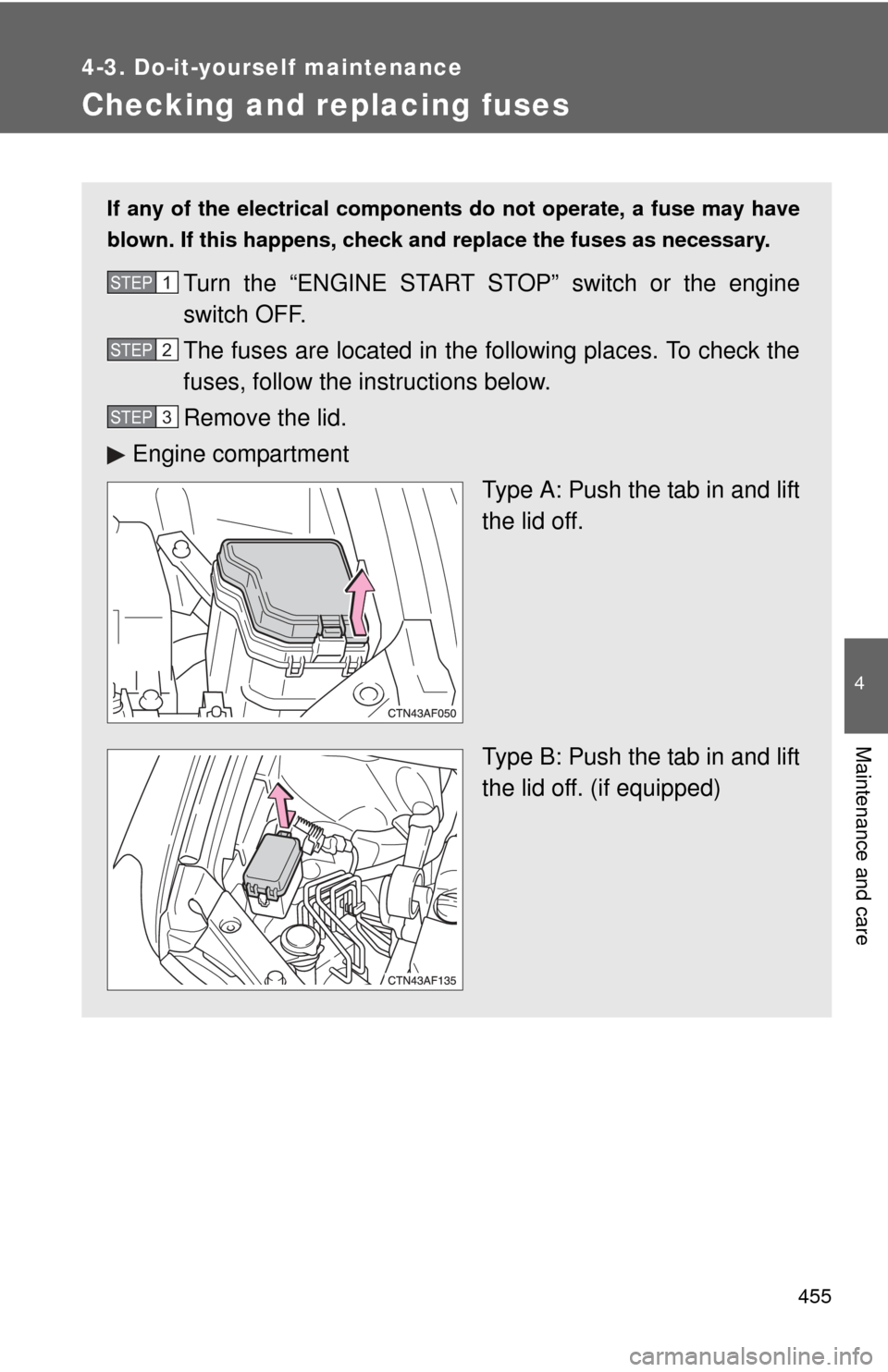
455
4-3. Do-it-yourself maintenance
4
Maintenance and care
Checking and replacing fuses
If any of the electrical components do not operate, a fuse may have
blown. If this happens, check and replace the fuses as necessary.
Turn the “ENGINE START STOP” switch or the engine
switch OFF.
The fuses are located in the following places. To check the
fuses, follow the in structions below.
Remove the lid.
Engine compartment
Type A: Push the tab in and lift
the lid off.
Type B: Push the tab in and lift
the lid off. (if equipped)STEP1
STEP2
STEP3
Page 457 of 577
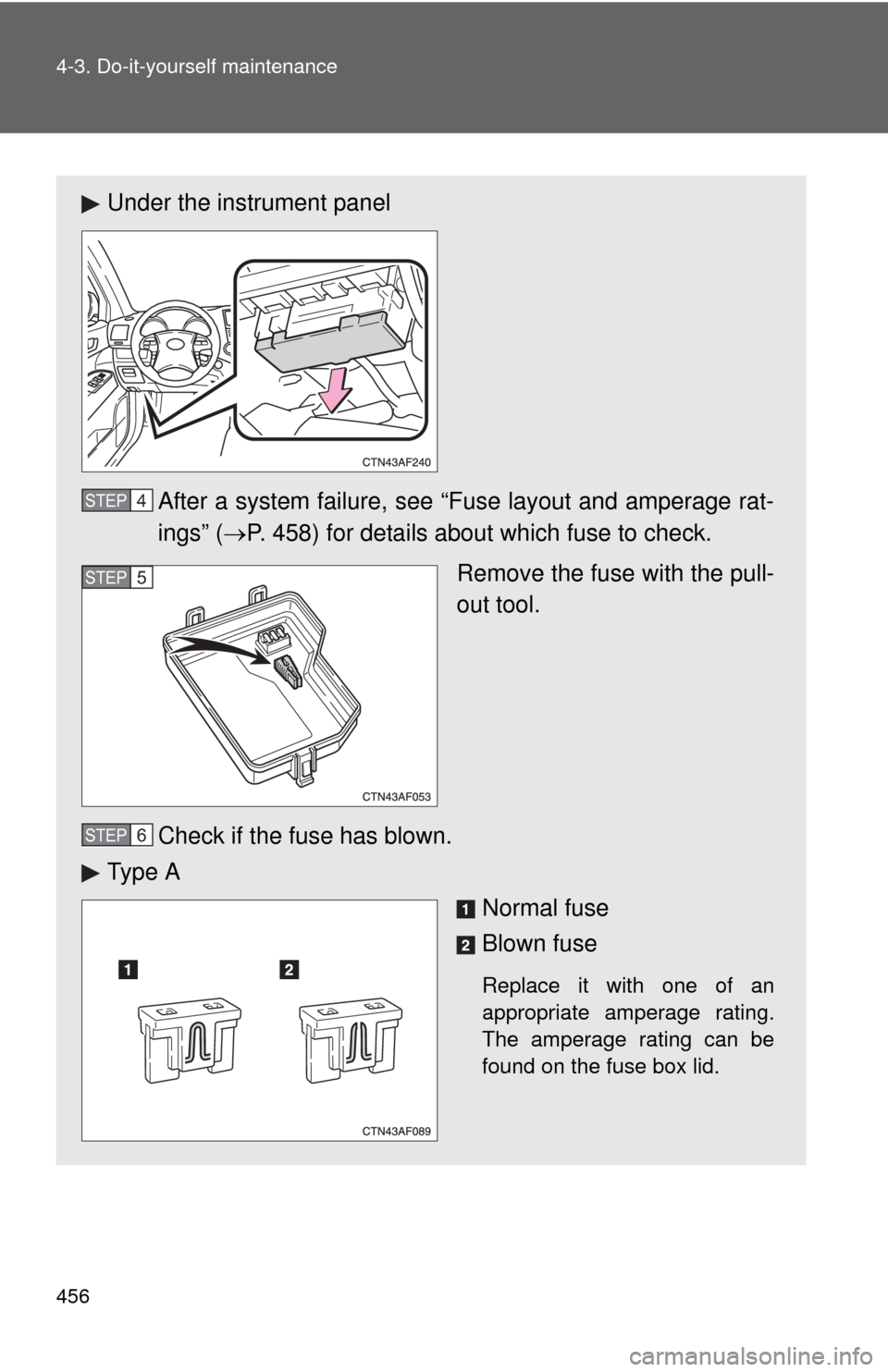
456 4-3. Do-it-yourself maintenance
Under the instrument panelAfter a system failure, see “Fuse layout and amperage rat-
ings” ( P. 458) for details about which fuse to check.
Remove the fuse with the pull-
out tool.
Check if the fuse has blown.
Ty p e A Normal fuse
Blown fuse
Replace it with one of an
appropriate amperage rating.
The amperage rating can be
found on the fuse box lid.
STEP4
STEP5
STEP6
Page 458 of 577

457
4-3. Do-it-yourself maintenance
4
Maintenance and care
Ty p e B
Normal fuse
Blown fuse
Replace it with one of an
appropriate amperage rating.
The amperage rating can be
found on the fuse box lid.
Ty p e C
Normal fuse
Blown fuse
Contact your Toyota dealer.
Ty p e DNormal fuse
Blown fuse
Contact your Toyota dealer.
Page 459 of 577
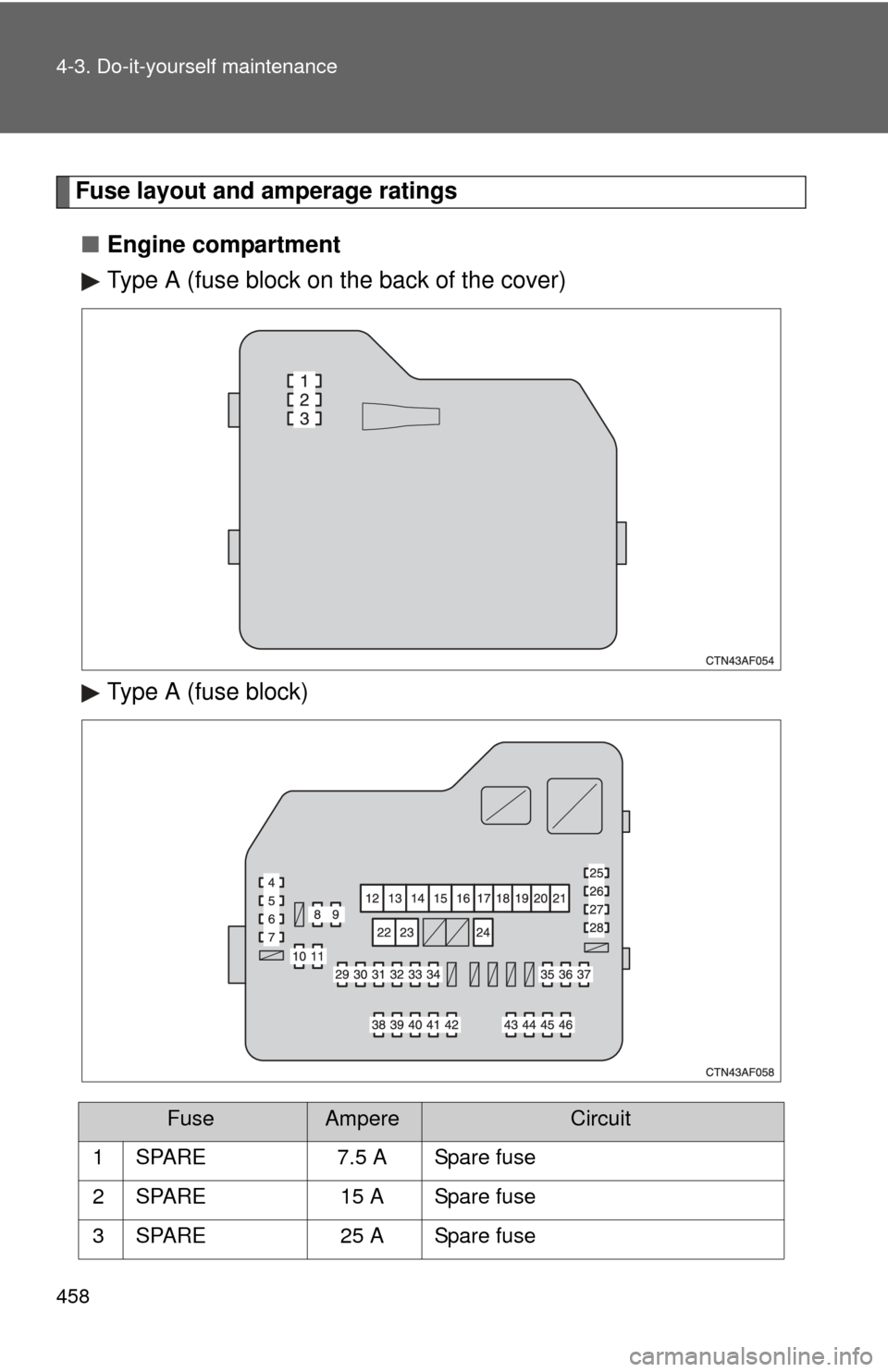
458 4-3. Do-it-yourself maintenance
Fuse layout and amperage ratings■ Engine compartment
Type A (fuse block on t he back of the cover)
Type A (fuse block)
FuseAmpereCircuit
1 SPARE 7.5 A Spare fuse
2 SPARE 15 A Spare fuse
3 SPARE 25 A Spare fuse